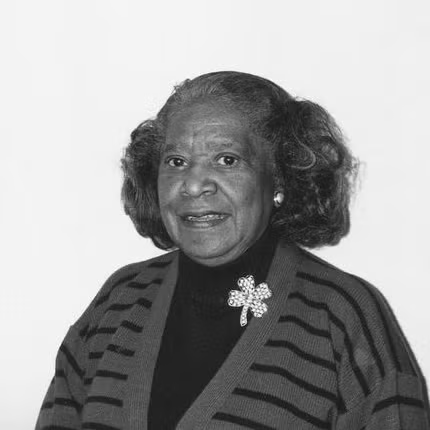
Who Was Mary Jackson?
Mathematician Mary Winston Jackson made remarkable strides in her field during an era marked by racial segregation. Her exceptional abilities in mathematics and science secured her a position as a “human computer” for the National Advisory Committee for Aeronautics (NACA), the precursor to NASA. Jackson eventually became NASA’s first Black female engineer. In addition to her pivotal role in advancing the space program, she actively supported the career development of women and minorities. Jackson passed away in February 2005 at the age of 83, and her groundbreaking contributions to NASA were later dramatized in the 2016 film Hidden Figures.
Early Years
Mary Winston Jackson was born on April 9, 1921, in Hampton, Virginia, to Ella and Frank Winston. She received her education at all-Black schools in Hampton, graduating with high honors from George P. Phenix Training School in 1937. Five years later, she earned dual bachelor’s degrees in mathematics and physical science from Hampton Institute.
Taking Her Talents to Work
Following her graduation, Jackson pursued various positions, including roles as a teacher, bookkeeper, and receptionist. In 1951, she began working at NACA in Langley, Virginia, where she was employed in the West Computers section as a research mathematician, commonly referred to at the time as a “human computer.” In 1953, she transitioned to the Compressibility Research Division of NACA.
Working Through Segregation
Despite President Franklin D. Roosevelt’s Executive Order 8802, which prohibited discrimination in the defense industry, Virginia’s state laws continued to enforce workplace segregation. Facilities were equipped with separate restrooms and cafeterias designated for “white” and “colored” individuals. In the cafeteria, white employees could choose their meals and sit in the lunchroom, while Black employees were required to make their requests to a cafeteria attendant and then return to their desks to eat—an experience Jackson deemed an indignity.
NASA’s First Black Female Engineer
After enduring several months of these “separate and unequal” conditions, Jackson contemplated resignation. However, a chance encounter with a supervisor changed her trajectory. After discussing her grievances, he invited her to work under his supervision. Recognizing her potential, he encouraged her to enroll in engineering courses. Eventually, Jackson was promoted to aeronautical engineer, making her NASA’s first Black female engineer. She developed expertise in wind tunnel operations and the analysis of data related to aircraft flight experiments.
Giving Back by Helping Others
In 1978, Jackson transitioned to a role as a human resources administrator. She served as both the Federal Women’s Program Manager in the Office of Equal Opportunity Programs and as the Affirmative Action Program Manager. Until her retirement in 1985, she dedicated herself to helping other women and minorities advance their careers, advising them to pursue additional education and courses to enhance their promotion prospects.
Death and ‘Hidden Figures’ Legacy
Throughout her career, Jackson contributed to numerous boards and committees, including the Girl Scouts of America, and received accolades from various charitable organizations for her leadership and service. She passed away at the age of 83 on February 11, 2005, at Riverside Convalescent Home in Hampton, Virginia.
In 2016, the story of Jackson, along with her NASA colleagues Katherine G. Johnson and Dorothy Vaughan, who were instrumental in calculating flight trajectories for Project Mercury and the Apollo program in the 1960s, was brought to the big screen in Hidden Figures. In the film, Janelle Monáe portrays Jackson.
In 2018, Jackson Elementary School in Salt Lake City, Utah, originally named after President Andrew Jackson, was renamed Mary W. Jackson Elementary School to honor the pioneering NASA engineer. Additionally, in June 2020, NASA honored her legacy by renaming its Washington, D.C. headquarters to The Mary W. Jackson NASA Headquarters.
